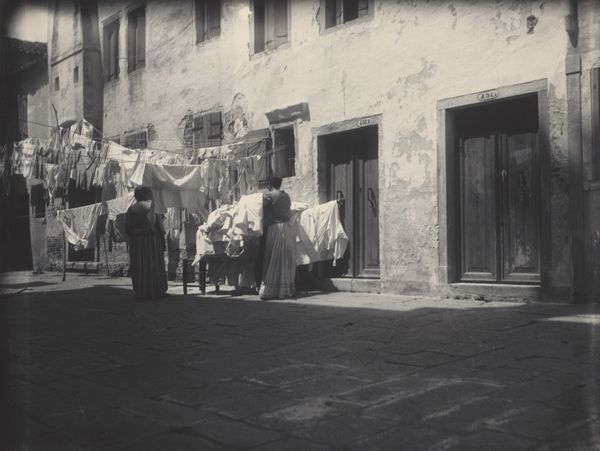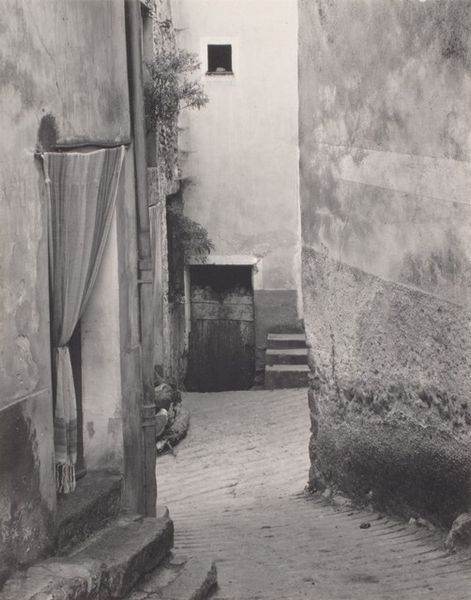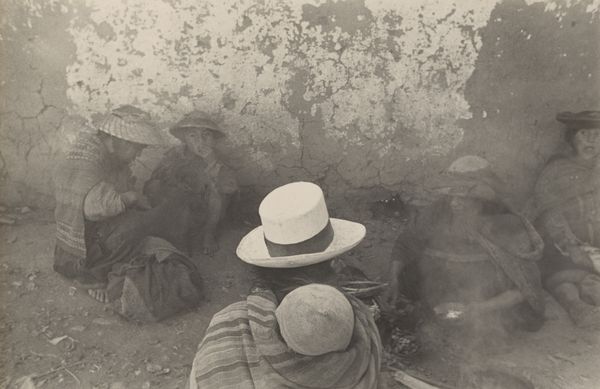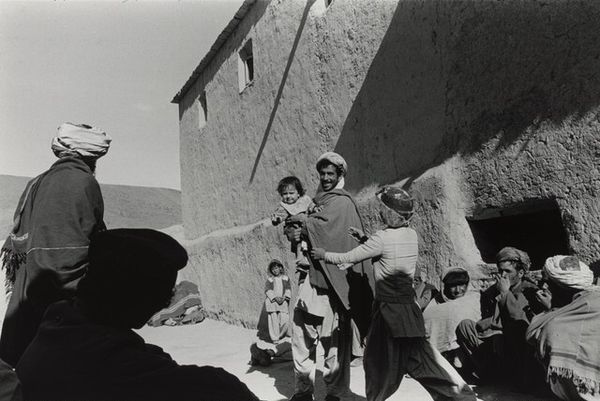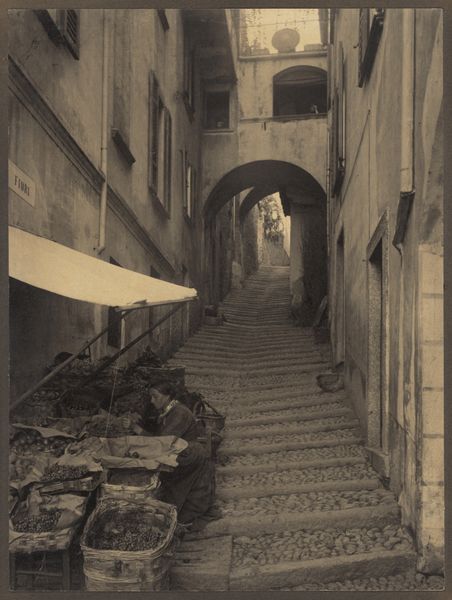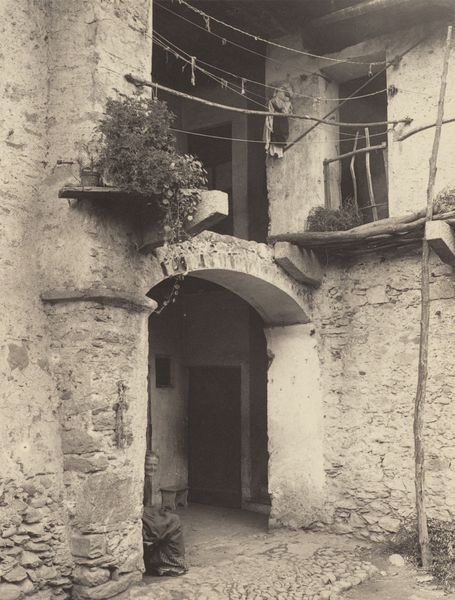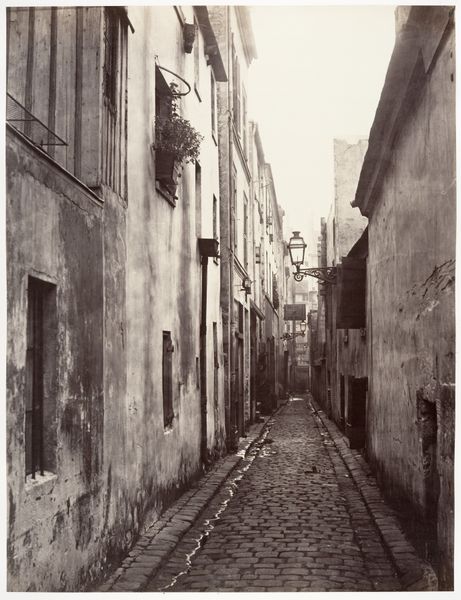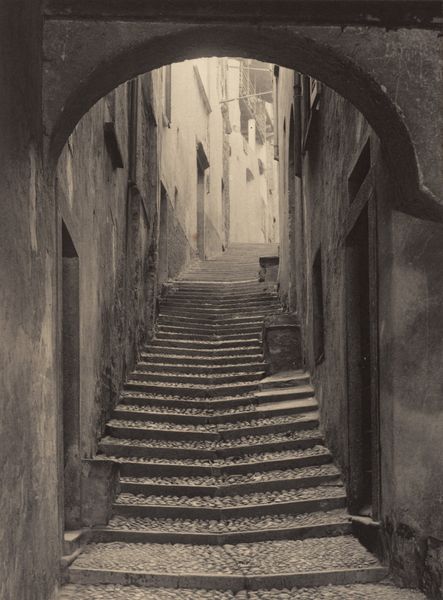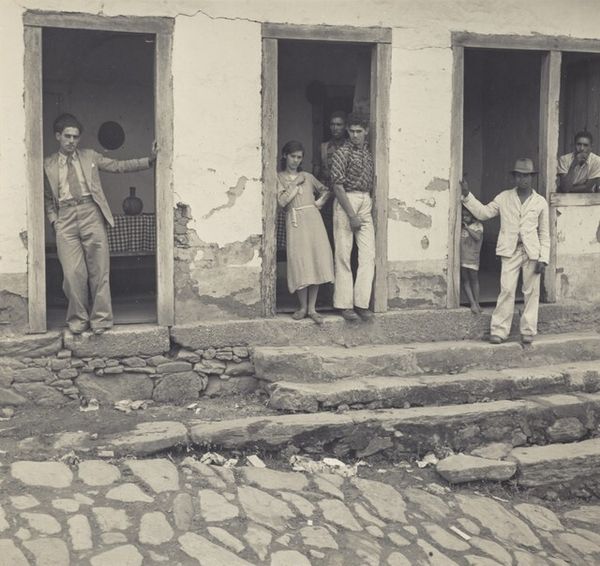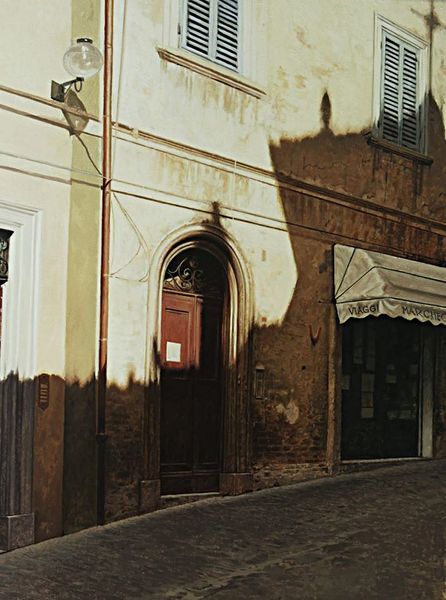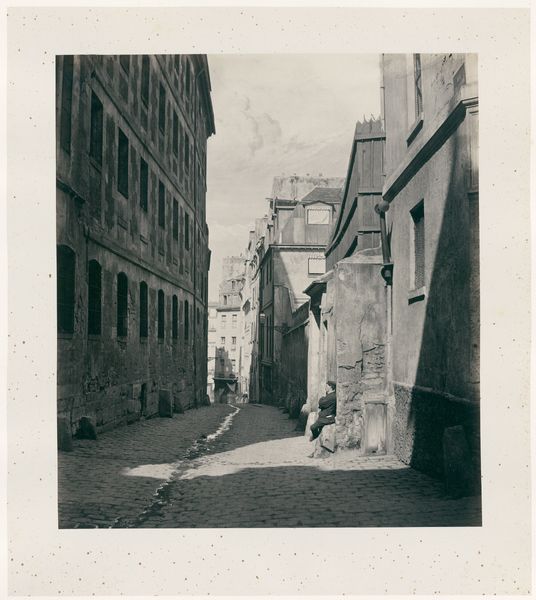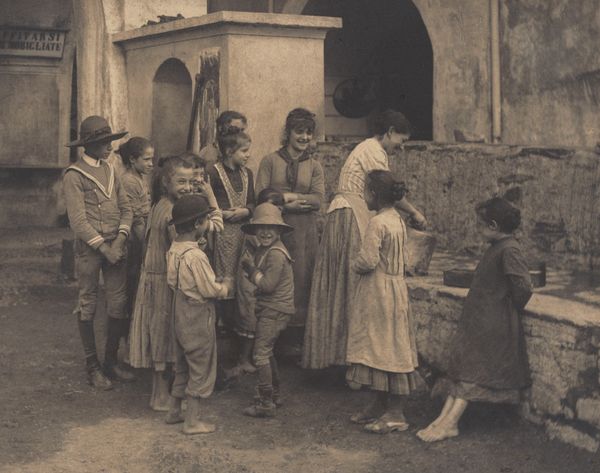
#
black and white photography
#
street shot
#
outdoor photo
#
black and white format
#
historical photography
#
black and white theme
#
black and white
#
monochrome photography
#
street photography
#
monochrome
Copyright: National Gallery of Art: CC0 1.0
Editor: This is Robert Frank’s “Peru, page 17,” from 1948. It’s a black and white photograph depicting a crowd moving up a street in a hillside town. There's a somber, almost documentary feel to it, maybe even a little claustrophobic. What captures your attention when you look at it? Curator: Claustrophobic... yes, that's a perfect word. For me, it’s all about the light. It feels incredibly oppressive, doesn't it? Like the sun is being swallowed. Think about it: 1948, post-war anxieties hanging in the air… you can almost feel that weight settling on those rooftops, can’t you? Are they climbing away, or heading home, weighted with woe? Editor: I hadn't considered that. I was focused on the people and their movement. I wonder where they’re all going? Curator: That’s the thing about Frank, isn’t it? He doesn't give you answers. He gives you a feeling. He plants you right there, among them. Those blank walls on either side... they speak volumes. Where is everyone hurrying from? What shared narrative makes so many follow this dusty path? Do you see in their posture some resignation, or an echo of hope? Or neither? Editor: Resignation, I think. A quiet, determined resignation. The composition, with the people filling up so much of the frame, really amplifies that feeling. Curator: Exactly! And that’s what Frank was brilliant at – finding the poetry in the everyday, revealing these tiny truths about the human condition using only the simplest ingredients: light, shadow, and a darn good eye. Even the "snapshot" feel suggests that Frank wanted viewers to experience what he saw, unvarnished, in real time. And don't you find it amazing how evocative it is? Editor: It really is. It makes you consider the context, the artist's vision, and, crucially, your own personal perspective on it all. Thanks, that's so insightful. Curator: My pleasure. Remember, art is rarely about definitive answers; it is about posing meaningful questions and feeling our way forward together, hats and all.
Comments
No comments
Be the first to comment and join the conversation on the ultimate creative platform.
